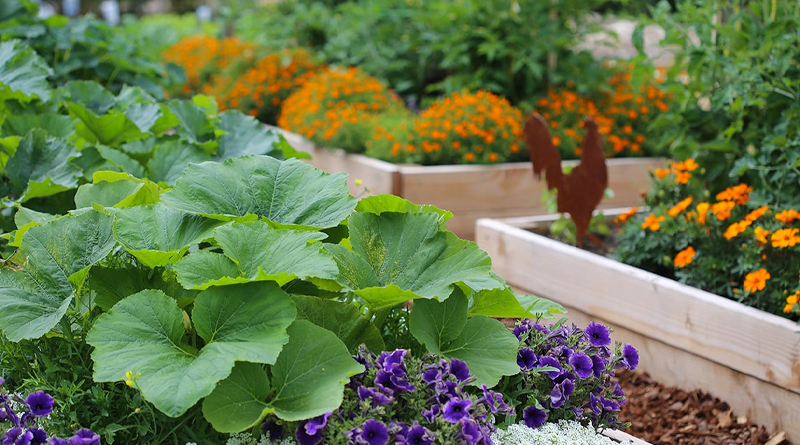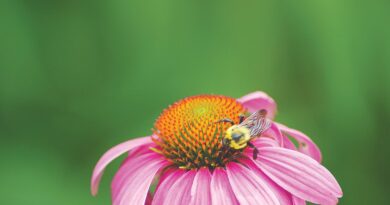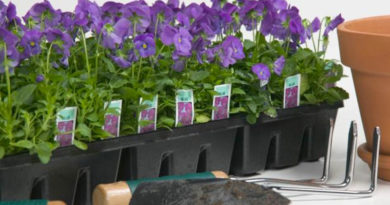Planting Companions
Long before chemical fertilizers and pesticides appeared, there were planting companions where farmers and gardeners knew that certain plants grow and taste better when planted next to each other. One type of plant may help another by providing shelter from wind, sun, or frost. Plants help each other by improving the soil with minerals and nutrients, they can attract birds and other natural predators that will deal with harmful insects, and they can also repel specific insects. The relationship between plants and plants and insects is known as “companion planting.” Today it’s by far the safest, natural way to garden organically.
Mixed planting
It’s easy to lure insects away from the plants they like to feed and lay their eggs on, by planting a variety of things together. So many different “smells” confuse insects, hopefully, to the point where they’re unable to locate their preferred food source.
Plants that naturally repel insects
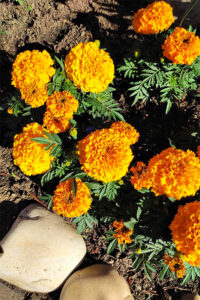 There are many beneficial herbs that keep insects away.
There are many beneficial herbs that keep insects away.
1. Peppermint repels ants, white cabbage moth, aphids, and flea beetle.
2. Since Mint is a notorious spreader that can easily get out of control. Establish it in pots that are above ground or sunk below where roots can’t escape drainage holes.
3. Garlic discourages aphids, flea and Japanese beetle, and spider mites.
4. Perennial Chives repel aphids and spider mites, two very common garden pests.
5. Chives are often planted among roses to keep aphids away and to resist the disease, Blackspot.
6. Basil drives away flies and mosquitoes.
7. Borage deters that monster of vegetable garden insects, the tomato hornworm.
8. Rosemary and Sage repel cabbage moth, bean beetles, and carrot flies.
9. Annual Marigolds can be used anywhere to deter Mexican bean beetle, squash bug, thrips, tomato hornworm, and whitefly. They are also known to repel harmful root knot nematodes (soil dwelling microscopic white worms) that attack tomatoes, potatoes, roses, and strawberries.
10. The root of the Marigold produces a chemical that kills nematodes as they enter the soil. If a whole area is infested, at the end of the season, turn the Marigolds under so the roots will decay in the soil. You can safely plant there again the following spring.
11. Nasturtium is another annual, in this case a trailing vine, that keeps away Colorado potato bug, squash bug, and whitefly.
12. The perennial, Artemisia or wormwood, deters slugs that areso devastating to foliage.
13. Radish discourage cucumber beetle, squash bug, and stink bug.
Ideal planting companions for vegetables
The following is a list of vegetables and their ideal planting companions, plus combinations to avoid.
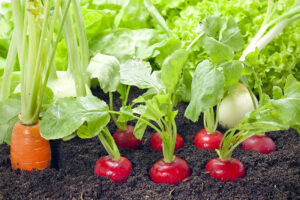 1. Beans-like celery and cucumbers but dislike onions and fennel.
1. Beans-like celery and cucumbers but dislike onions and fennel.
2. Beets are compatible with bush beans, lettuce, onions, kohlrabi, and most members of the cabbage family. Keep pole beans and mustard away from them.
3. Cabbage, celery, dill, onions, and potatoes are good companion plants. Dislikes include strawberries, tomatoes, and pole beans.
4. Carrots, lettuce, radish, onions, and tomatoes are friends. Dill isn’t, so plant it at the other end of the garden.
5. Corn prefers to be near pumpkins, peas, beans, cucumbers, and potatoes. Keep tomatoes away.
6. Cucumbers like sweet corn, peas, radishes, beans, and sunflowers. Dislikes include aromatic herbs and potatoes.
7. Lettuce grows especially well with onions. They are also compatible with strawberries, carrots, radishes, and cucumbers.
8. Onions can be planted near lettuce, beetroot, strawberries, and tomatoes but keep well away from peas and beans.
9. Peas, carrots, cucumbers, sweet corn, turnips, radishes, beans, potatoes, and aromatic herbs are good companions. Keep peas away from onions, garlic, leek, and shallots.
10. Radish grows well with beetroot, carrots, spinach, parsnip, cucumbers, and beans. Avoid planting near cabbage, cauliflower, Brussels sprouts, broccoli, or turnips.
11. Squash likes cucumbers and corn.
12. Tomatoes, carrots, onions, and parsley are good companion plants. Basil improves growth and flavour. Keep cabbage and cauliflower away from them.

